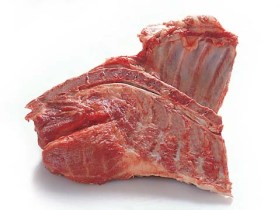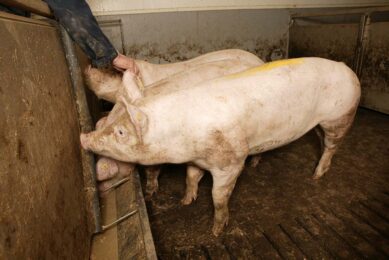USMEF: Chinese consumers’ reaction to H1N1

Nearly two-thirds of China’s consumers stopped eating pork in the early stages of the H1N1 influenza outbreak this year, and more than one in five consumers in the world’s largest pork market still believe that eating pork can result in catching the flu virus, according to a survey of 1,200 Chinese consumers commissioned last month by the US Meat Export Federation (USMEF).
Speaking to the Fifth International Meat Secretariat (IMS) World Conference in Qingdao, China, on Thursday, Sept. 3, Joel Haggard, senior vice president Asia-Pacific for USMEF, told the more than 600 global pork industry executives in attendance that China – both the world’s largest pork producer and consumer – may have been more affected by the H1N1 virus outbreak than previously suspected.
©
“In the early stages of the outbreak, 64% of Chinese consumers refrained from pork consumption,” said Haggard, citing research conducted Aug. 6-10 by Sinotrace Marketing Research Company of 200 consumers in each of six Chinese cities: Beijing, Shanghai, Chongqing, Guangzhou, Nanjing and Shenyang.
©
Even now, months after the initial outbreak, 21.2% of those surveyed still believe that eating pork can lead to catching the H1N1 virus. Despite efforts by the Chinese government to educate consumers regarding the safety of pork, 54.7% of those who fear the connection between pork and the flu virus say that it is because the virus has been labelled “swine flu.”
©
“The research suggests that the initial Chinese consumer reaction to H1N1 was sharp, and that a significant number of consumers may still associate the virus with pork and hogs,” said Haggard.
Haggard also delivered to the conference an overview of the US pork industry’s development over the last 20 years, with the message that US pork producers – contrary to many assumptions by those in overseas markets – do not receive substantial subsidies from the US government.
©
He reported that increased efficiencies in the US pork industry have resulted in steadily declining prices for consumers. When adjusted for inflation, prices per pound for pork in the United States have declined from $2.40 per pound in 1980 to $1.60 per pound in 2008.
Among the productivity measures Haggard cited for the US pork industry were reductions in the cost of feed and labour – 44% and 80%, respectively – that are required to produce a unit of pork. Those productivity gains were realised between 1992 and 2004.
Related website
• USMEF
Join 18,000+ subscribers
Subscribe to our newsletter to stay updated about all the need-to-know content in the pigsector, three times a week. Beheer
Beheer










 WP Admin
WP Admin  Bewerk bericht
Bewerk bericht